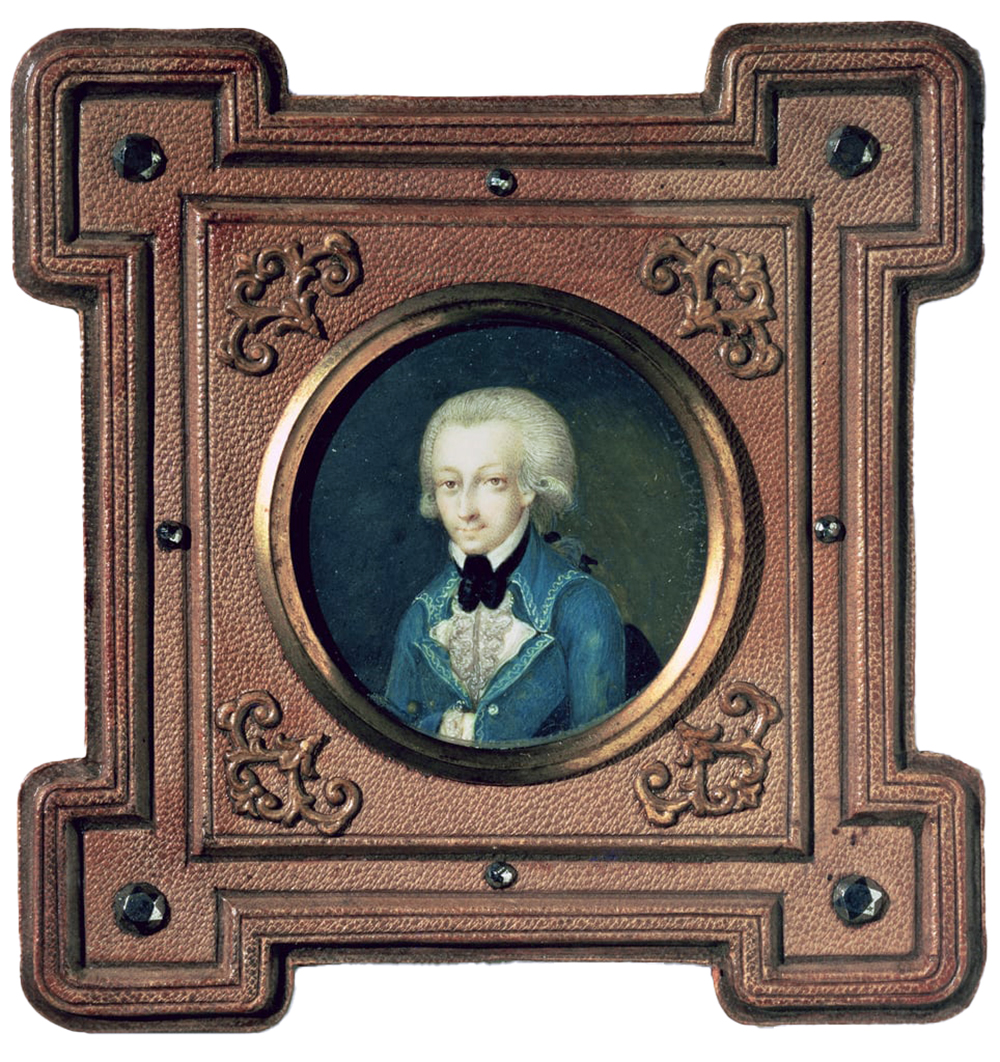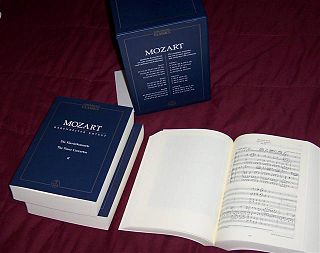The Symphony No. 36 in C major, K. 425, was written by Wolfgang Amadeus Mozart during a stopover in the Austrian town of Linz on his and his wife's way back home to Vienna from Salzburg in late 1783. The entire symphony was written in four days to accommodate the local count's announcement, upon hearing of the Mozarts' arrival in Linz, of a concert. The première in Linz took place on 4 November 1783. The composition was also premièred in Vienna on 1 April 1784. The autograph score of the "Linz Symphony" was not preserved, but a set of parts sold by Mozart to the Fürstenberg court at Donaueschingen in 1786 does survive.

The Symphony No. 25 in G minor, K. 183/173dB, was written by the then 17-year-old Wolfgang Amadeus Mozart in October 1773, shortly after the success of his opera seria Lucio Silla. It was supposedly completed in Salzburg on October 5, a mere two days after the completion of his Symphony No. 24, although this remains unsubstantiated. Its first movement is widely known as the opening music in Miloš Forman's film Amadeus.
The Köchel catalogue is a chronological catalogue of compositions by Wolfgang Amadeus Mozart, originally created by Ludwig von Köchel, in which the entries are abbreviated K., or KV. The numbers of the Köchel catalogue reflect the continuing establishment of a complete chronology of Mozart's works, and provide a shorthand reference to the compositions.
Violin Concerto No. 4 in D major, K. 218, was composed by Wolfgang Amadeus Mozart in 1775 in Salzburg. The autograph of the score is preserved in the Biblioteka Jagiellońska, Kraków. He seemed to have originally composed it for himself to play, but after leaving the Salzburg Court Orchestra, he changed and updated the concerto for the successor of his position in his orchestra, Antonio Brunetti, to play. It is debatable whether the concerto was above Mozart's level of mastery or if he purposely made the concerto difficult for Brunetti on account of his greater ability. The first movement is nicknamed the “military” Mozart Concerto while the second movement consists of melodic lines. The third movement is joyful and full of fun.

The Neue Mozart-Ausgabe is the second complete works edition of the music of Wolfgang Amadeus Mozart. A longer and more formal title for the edition is Wolfgang Amadeus Mozart. Neue Ausgabe sämtlicher Werke.
The Symphony No. 28 in C major, K. 200/189k, by Wolfgang Amadeus Mozart is his last piece in the "Salzburg series". The date of composition is uncertain; it probably dates from 17 or 12(?) November 1774 or 1773(?).
The Symphony No. 26 in E♭ major, K. 184/161a, was written by Wolfgang Amadeus Mozart and completed on March 30, 1773, one month after he returned from his third Italian tour.
Symphony No. 6 in F major, K. 43, was composed by Wolfgang Amadeus Mozart in 1767. According to Alfred Einstein in his 1937 revision of the Köchel catalogue, the symphony was probably begun in Vienna and completed in Olomouc, a Moravian city to which the Mozart family fled to escape a Viennese smallpox epidemic; see Mozart and smallpox.
Symphony No. 7 in D major, K. 45, by Wolfgang Amadeus Mozart, was completed in Vienna in January 1768 after the family's return from a visit to Olomouc and Brno in Moravia. The symphony is in four movements. Its first performance was probably at a private concert. The symphony was reworked to become the overture to Mozart's opera, La finta semplice, K. 51, composed and performed later that year, and the overture itself was subsequently adapted further to create a new symphony, known in the Köchel 1964 (K6) catalogue as K. 46a. The autograph of the score is preserved in the Staatsbibliothek Preusischer Kulturbesitz in Berlin.
Symphony No. 9 in C major, K. 73/75a, by Wolfgang Amadeus Mozart, was likely composed in July 1772 in Salzburg between his second and third Italian journeys.
The Symphony No. 23 in D major, K. 181/162b, by Wolfgang Amadeus Mozart was dated as complete on May 19, 1773. It is sometimes called "Overture", even though the autograph score bears the title "Sinfonia". The symphony is scored for 2 oboes, 2 horns, 2 trumpets, and strings.
Symphony No. 24 in B flat major, K. 182/173dA, is a symphony composed by Wolfgang Amadeus Mozart on October 3, 1773. The symphony has the scoring of 2 oboes, 2 horns, and strings.
The Symphony in F major "No. 42", K. 75, was probably written by Wolfgang Amadeus Mozart from March to August 1771 in Salzburg.
The Symphony in G major "Old Lambach", K. Anh. 221/45a, was probably written by Wolfgang Amadeus Mozart during 1766 in The Hague and revised in 1767. Both versions – the original and the revision – have survived.
The Symphony in B♭ major "No. 55", K. Anh. 214/45b, was probably written by Wolfgang Amadeus Mozart in early 1768 in Salzburg.
The Symphony in D major "No. 45", K. 95/73n, was probably written by Wolfgang Amadeus Mozart in 1770 in Rome.
The Symphony in D major "No. 44", K. 81/73l, may have been written by Wolfgang Amadeus Mozart in 1770 in Rome, although it has sometimes also been attributed to his father Leopold Mozart.
The Symphony in A minor "Odense", K. Anh. 220/16a, was formerly attributed to Wolfgang Amadeus Mozart. It is one of only three symphonies possibly by Mozart to be in a minor key.

Wolfgang Rehm was a German musicologist active mostly in music publishing, especially the Neue Mozart-Ausgabe. He was on the board of its editorial team for decades, and personally edited operas and piano music. While he worked on it for Bärenreiter in Kassel, he was responsible for the program of the Kasseler Musiktage festival, and after he moved for further work to Salzburg, he shaped the program of the Mozartwoche. He was also a member of the International Association of Music Libraries, Archives and Documentation Centres from 1959 to 1985, and also a founding member and treasurer of the Répertoire International des Sources Musicales data base.



